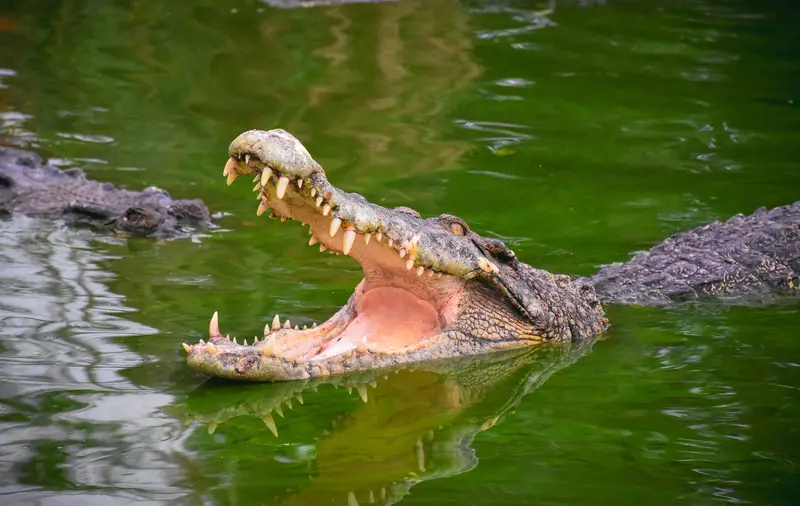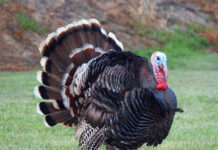A 37-year-old mother of three was killed by a saltwater crocodile while fishing in the Gobari River near Bhitarkanika National Park in Odisha, India, on Friday, September 19, 2025. Laxmi Dalei of Suniti village was catching fish around 10:30 a.m. when the reptile emerged from the water and dragged her beneath the surface.
Witnesses at the scene raised an alarm and attempted to save Dalei, but their efforts proved unsuccessful. Forest Range Officer Santanu Kumar Dalei of Mahakalapada described the attack, stating that “the crocodile emerged from nowhere and lunged at her.” He indicated that before the victim could react, the reptile had dragged her into the water.
A comprehensive search operation was immediately launched involving local forest guards, fire personnel and nearby residents. The search continued through the day and into the following morning. Dalei’s mutilated and half-eaten remains were recovered on the riverbank on Saturday, September 20, 2025.
The attack occurred within the Mahakalapada forest range, which falls under Bhitarkanika National Park in Kendrapara district. The area encompasses a vast saltwater swamp spanning approximately 404 miles across the Brahmani River and Baitarani River deltas. According to recent wildlife census data, the region is home to 1,826 saltwater crocodiles, representing the highest concentration in India.
Forest officials acknowledged the ongoing challenges of human-crocodile conflicts in the area. Range Officer Santanu Kumar Dalei told local media that authorities do not consider crocodiles a risk to public safety if people remain out of the waters, but warned that safety cannot be guaranteed for those who enter the water bodies.
This incident marks the 13th fatal crocodile attack in the past two years near Bhitarkanika, according to regional statistics. Over the past 40 months, 29 people have been killed by crocodiles in the area, highlighting the escalating nature of human-wildlife conflicts in villages surrounding the sanctuary.
The forest department has implemented various preventive measures to reduce such attacks. Officials have erected barricades around 120 river access points in the Aul, Mahakalapada, Rajkanika and Pattamundai blocks surrounding Bhitarkanika. Additionally, awareness campaigns have been conducted through poster distribution, pamphlet circulation and loudspeaker announcements warning riverside villagers to avoid entering the water.
Despite these efforts, residents continue to rely on the rivers for their livelihoods. Many villagers, like Dalei, depend on fishing as their primary source of income, making it difficult to completely avoid the crocodile-inhabited waters. The conflict has intensified as crocodiles are increasingly observed venturing into riverside villages across multiple blocks in both Kendrapada and Bhadrak districts.
Local farmers’ leader Umesh Chandra Singh noted that crocodiles are frequently seen invading villages far from the park’s main water bodies. These incursions extend across the Aul, Rajkanika, Pattamundai, Mahakalapada and Rajnagar blocks of Kendrapada district, as well as the Chandabali and Tihidi blocks in neighboring Bhadrak district.
Dalei is survived by her husband, Babula Dalei, and three young daughters. The family tragedy underscores the difficult balance between conservation efforts and community safety in areas where human settlements border critical wildlife habitats.
The incident occurred just days after another fatal crocodile attack claimed the life of a 15-year-old girl in a separate location. Shivani Kevat was collecting water from the Parvati River in Rajasthan on September 15 when she was pulled into the water by a crocodile. Her body was recovered the following day, with an autopsy confirming death by drowning.
Bhitarkanika National Park represents a critical habitat for saltwater crocodiles, which are protected under Indian wildlife conservation laws. The sanctuary’s 672-square-kilometer area provides essential breeding and feeding grounds for the species, but the proximity of human settlements creates ongoing challenges for both wildlife management and community safety.
Forest officials continue investigating the circumstances surrounding Dalei’s death while maintaining search protocols for similar incidents. The department has increased patrols in high-risk areas and is working with local communities to develop safer alternatives for residents who depend on river resources for their livelihoods.











